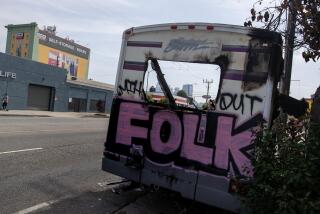BLM Posts New Rules for Off-Road Use
PORTLAND, Ore. — A new national management plan for off-road vehicles in the West has been unveiled by the Bureau of Land Management. For the first time, it could subject mountain bikes, in-line skates and other non-motorized vehicles to the same rules as gas-driven Jeeps, motorbikes and dune buggies.
Though the BLM draft management strategy for off-road vehicles does not itself limit vehicle use on the 264 million acres of BLM land in the West, it lays the groundwork for field managers to do so if they believe it is necessary to protect wildlife and the environment.
“We’re not saying you have to close areas to this kind of use, but we are saying if you have problems or conflicts in some places, you should probably consider being a little more restrictive,” said Scott Florence, manager of the BLM’s Lakeview Resource Area in southern Oregon. Florence is a drafter of the plan.
Executive orders issued in the 1970s have long governed off-road vehicle use on public lands, but an explosion in the number of such vehicles has since led to increasing impacts and congestion on some popular federal acreage that require closer scrutiny. Americans buy an average of 1,500 new off-highway vehicles each day, according to the BLM.
The BLM strategy, posted by the agency on its Web site Monday, will not close any roads or trails but will make off-road vehicle rules more consistent across the West, officials said.
Though the plan was first aimed only at motorized vehicles such as motorcycles, Jeeps and all-terrain vehicles, public comments later persuaded the agency to also include muscle-driven mountain bikes, in-line skates and even land-sailing “yachts” in its definition of off-road vehicles.
“We had large numbers of people who wanted us to deal with non-motorized vehicles too” because of their increasing numbers and impacts, Florence said.
Though the broadened definition recognizes the legions of mountain bikes now using public lands, Don Vardamis of the International Mountain Bicycling Assn. said it’s unfair to suggest such bicycles can cause the same kind of damage that gas-driven vehicles do.
“We would encourage the BLM to handle those two categories separately and not lump them together because the impacts and conflicts of the two are very different,” he said. “Some of the best mountain-bike riding in the country is on BLM land, and it can be done responsibly.”
BLM officials in Western states will be expected to write elements of the national strategy into their local management plans in coming years.
The new vehicle strategy does highlight the differing effects of motorized and non-motorized vehicles by recognizing a need to dampen the noise of motor-driven vehicles, by working with manufacturers.
It will also boost enforcement of off-road vehicle rules and order BLM field staff to consider limiting vehicle use on all threatened and endangered species habitat “to prevent adverse effects to those species and habitat.”
The Blue Ribbon Coalition, an advocacy group for off-road vehicle users, complained that the draft appears too enthusiastic about enforcing the Endangered Species Act, either by limiting access or closing areas that are habitat for imperiled species.
With the number of species listed and proposed, that could cover most bureau land, said Adena Cook of the coalition. The coalition is also concerned that the bureau will restrict use in wilderness study areas to roads and trails already inventoried when the areas were designated.
But Katie Fite of the environmentalist Committee for Idaho’s High Desert said the plan “leaves ORVs as unregulated as if nothing had happened. Rare-species habitat [in Idaho] is being torn to shreds by ORVs under BLM’s current lack of management.”
She said the agency should at least protect existing wilderness study areas and inventoried roadless lands from ATVs, motorcycles and trucks. Currently, bureau plans close off only 6% of the public lands in the contiguous United States, Fite said.
The plan is subject to public comment through Jan. 3.
More to Read
Sign up for Essential California
The most important California stories and recommendations in your inbox every morning.
You may occasionally receive promotional content from the Los Angeles Times.










